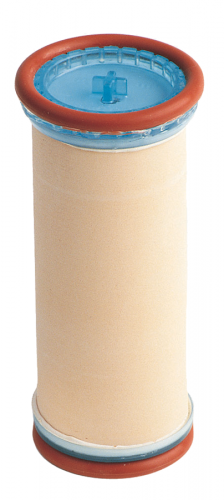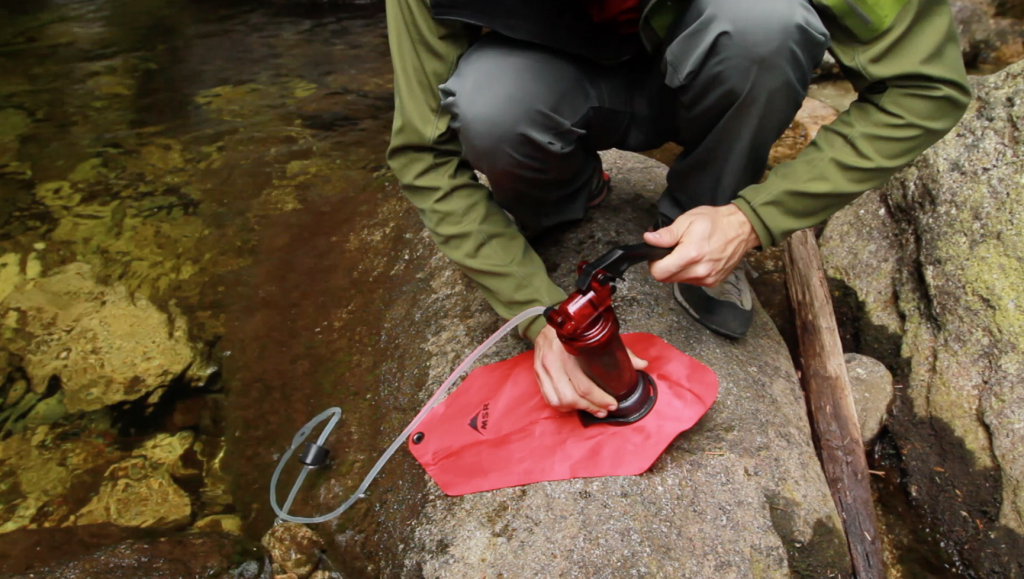Comparing Your Water Treatment Options: Part 1
Choosing the best way to treat your backcountry water can be tough. From pump filters to UV light, the market is full of options, and navigating today’s advanced technologies can be intimidating. Yet each treatment method has its pros and cons depending on the type of water you expect to encounter. In this two-part series, we’re helping you understand how each of your treatment options works and what it’s designed to do—so you can choose the one that’s right for you and your adventures.
Today we’re discussing pumps, gravity-fed filters, and the category of small, personal devices like bottles, squeeze, and drink-thru filters. In part two, we’ll look at UV light, chemicals, combination treatments and boiling.
Microfilters vs. Purifiers
First, it’s important to know the difference between a microfilter and a purifier. Microfilters are typically designed to focus on removing protozoan parasites (like cryptosporidium and giardia), and bacteria. For backcountry travelers in the U.S. and Canada, a microfilter is generally considered sufficient in terms of protection level.
A purifier, by definition, removes the threat of bacteria, protozoa and the tiniest class of waterborne pathogens, viruses. International travelers and those stocking emergency kits should seek out a purifier, as the risk of viral infection is greater in areas where human waste can contaminate water sources.
How devices remove waterborne threats: What’s happening inside?

Next, you can think of the treatment devices in this article as made up of two “parts”: the filter element inside that actually cleans your water; and the part of the device that controls how the water is forced through that filter element (the device’s “form factor”).
The technologies that make up the filter element are called “filter media” and vary from device to device. Some are more reliable than others in certain conditions. Here’s a look at the most common types of filter media out there and how they clean your water:
Hollow fiber technology: Inside the filter cartridge is a bundle of tiny straws, the walls of which are full microscopic pores. These pores allow water to flow through, but block the harmful pathogens and dirt. Because the contaminants are physically being removed from your water, hollow fiber technology is very reliable in many real-world water conditions. Hollow fibers offer very high flow rates, but some can be damaged by drops or freezing temps.
Ceramic: Ceramic filter elements usually come in the form of a cylinder. They feature a maze of microscopic holes that also physically block the contaminants. Ceramic cartridges don’t offer as much surface area, resulting in a slower flow rate, but even heavy clogging can be quickly reversed with a little scrubbing.
Activated Carbon: Usually in the form of a block or granulated core. Carbon works by adsorption—that is, attracting contaminants to its surface where they get stuck. Carbon is great for removing secondary contaminates like tastes and odors. But it can lose effectiveness when flow rates or contamination levels are high. Therefore, MSR does not rely on it for removing the microbiological threats.
Silica Depth: An old term for a ceramic filter.
Other Adsorptive Media: If a device doesn’t use one of the above, it likely uses some technology that relies on adsorption. Like carbon, adsportive media are good for reducing tastes and odors from clear water. But they are not reliable for most backcountry water. If water contains particles like sediment, these filters can become overwhelmed quickly, allowing threats through. More, they don’t indicate when they’re “full,” so you never know whether your filter is still doing its job.
Comparing Your Treatment Device Options
Now that you know how the water is cleaned, let’s look at your options for moving it through the filter—these are the forms or devices you’ll see on the shelf.
Pump Microfilters/Purifiers

The pump is one of the most common and highly trusted forms. A hand pump forces water through the filter element. The element is oftentimes ceramic, hollow fiber, glass fiber, or cellulose. Some also have a layer of carbon to remove tastes and odors.
Their durability, reliability and ease of use have made pumps the mainstay of backcountry travelers for decades. Because they often remove sediment as well as the pathogens, they can be ideal for situations when you’re not sure what kind of water—clear, turbid, silty—you’ll find.
Most pumps have flow rates around 1 liter per minute. The majority are compact and about 16 oz. or less. A great one will feature a cartridge that can treat over 1,000 liters. At MSR, our water treatment pumps can be cleaned in the field and those with hollow fiber cartridges offer an in-field integrity test.
The downside to pumps? You must remain by the water source and do the pumping yourself. Traditionally, they’re best suited for solo travelers and pairs.
Gravity Filters

Gravity filters are fast, easy and practically do all the work for you. They’re so effortless that many people are instant converts. Their filter mechanism is similar to a pump, but here, gravity forces the water through. All you have to do is find a tree branch or other way to elevate the dirty reservoir so that gravity can do its work. Reliable gravity-fed filters often use hollow fiber or glass fiber, but other media exist.
Like pumps, gravity filters are great for wilderness travelers. They’re ideal for groups and basecamps because they often hold up to several liters. Most are pretty fast, but their real advantage lies in filtering your water all while you set up camp or prep meals.
Gravity filters roll up compact and often weigh less than a pump. In general, their cartridges don’t last quite as long, but using the clearest water possible helps increase their longevity. Most can be cleaned to maintain high flow rates. Those that use hollow fiber can be damaged by freezing or drops, so it’s good to look for one that offers an in-field integrity test, like the MSR AutoFlow microfilter.
Bottle / Squeeze / Drink-Thru Filters
The main advantage of this class of small, personal filters is low cost and complexity—the drinking bottle, collection bag, or straw, and its filter element are contained in one unit. These devices are meant for fast and light performance and/or ultimate convenience. They offer limited capacity and flow rates, so they’re best suited for individuals on day activities, like hiking, running or mountain biking, or as back-up filters.
Some of the options available use adsorptive media (carbon, coconut shell carbon, etc.), so they are not a reliable way to remove the harmful microorganisms. Others, like the MSR TrailShot, do hollow fiber technology, making them suited for backcountry water sources.
The squeeze and drink-thru filters can be ultralight. The bottles are about a half pound or less.
In this category, it’s important to consider the design of the device. While some devices seem to offer ultimate convenience, they can sacrifice practical functionality. Depending on the design, you might have to:
- Lie in the dirt to reach the water source.
- Carry around the dirty collection bag.
- Forgo filling up other vessels with the water you treat.
- Be uncertain about their effectiveness—many don’t offer integrity checks.
- Carry your own, as will everyone in your group.
So how do you choose the best option for you?
Do your homework. First, understand which internal technology the device employs to clean your water. Because some do not reliably remove pathogens, it’s important to evaluate the technology if you’re headed into the backcountry or anywhere microorganisms are a concern. Then, it’s really just up to you to decide which form factor best suits your needs, preferences and types of adventures.
